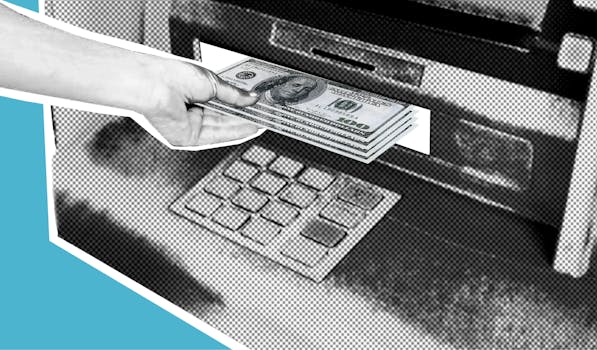Money Management
Stop Budgeting Mistakes: Essential Tactics for Smarter Money Management
Struggling with budgeting mistakes? Discover rules, routines, and scripts to stop overspending, protect your savings, and build smarter financial habits—no matter your income or life stage.
Advertisement
Almost everyone has left a store and wondered where all their cash went. Spotting your budgeting mistakes isn’t always simple, but understanding what leads to those pivotal errors can make a difference. Even small missteps can add up over time, silently draining your financial security.
Trouble with budgeting matters far beyond running out of money before payday. Spending leaks, missed goals, and sporadic tracking stall many financial dreams. These budgeting mistakes can feel routine but chip away at progress quietly each month, making goals seem farther out of reach.
This article brings clarity to tricky budget territory. You’ll explore practical solutions for common budgeting mistakes, with actionable steps and realistic examples to help you make changes today. Let’s break the cycle and steer your budget toward success.
Zeroing In: Clear Rules Prevent Drifting From Your Plan
Starting with a clear, written rule—like only spending on groceries after making a list—prevents drift. Concrete boundaries help turn intentions into habits. Rules that match your life feel natural and keep you grounded daily.
Without boundaries, it’s easy to let a few dollars slip here and there. Rules reduce emotional decision-making. Picture someone pausing at a checkout, reviewing their rule, and calmly putting an impulse item back.
Anchoring Decisions With Personal Prompts
One successful approach is the prompt: “I only buy coffee with cash on Mondays.” This keeps choices deliberate. Such scripts retrain the brain and feel second nature after a few weeks. Behavioral cues matter.
A written budget feels heavy at first, but prompts lighten the mental load. Imagine posting short prompts on your phone lock screen. Small reminders nudge you back on track before each decision.
Try using visual signals, like highlighting your weekly spending cap in bright colors. Repeated exposure helps you internalize the boundaries and reinforce better habits every shopping trip.
Micro-Commitments Win the Day
Replacing “I’ll try to spend less” with “No takeout except Friday lunch with coworkers” builds lasting results. A micro-commitment sets a precise limit, so you know instantly whether a purchase fits or not.
Visual aids, like drawing a box next to a goal on your budget, invite accountability. If a box stays unchecked at the end of the week, that tells you it’s time to adjust your approach.
Share a rule with someone you trust: “I text my partner before I buy new shoes.” Social accountability raises the stakes and increases your follow-through on micro-commitments.
| Rule Style | Example Prompt | Common Error | Takeaway |
|---|---|---|---|
| Written Rule | “Only use debit for gas.” | Forgetting rule in the moment | Review rules before leaving home |
| Prompt | “No snacks before lunch.” | Impulse triggers override plan | Keep reminders visible |
| Micro-Commitment | “No Amazon after 9pm.” | Late-night browsing leads to buying | Turn notifications off at night |
| Accountability | “Tell roommate before spending $50.” | Feeling embarrassed to share | Frame as teamwork, not policing |
| Visual Cue | Highlight weekly limits | Ignoring the cues after a while | Refresh cues monthly |
Resisting the Pull: Avoid Traps That Blow Your Budget
The trick to sticking to your plan lies in recognizing—and dodging—the common traps that sabotage careful budgeting. Each pitfall comes with a fix you can put into action right now.
Impulse purchases or underestimating irregular expenses quickly unravel progress. Honing awareness of these traps sets you up to make your budget a true tool, not just another list.
Spotting Sneaky Budget Busters Early
Notice when you’re drawn to end-cap displays or quick online deals. These are designed to trigger emotional buying. Name what’s happening: “That’s a nudge, not a need.” Pause for ten seconds before grabbing the item.
Bake in “cool-off” periods for anything over your set spending threshold. Set a rule: “Wait one day before large purchases.” This reduces buyer’s remorse and keeps your spending intentional.
- Set a specific spending wait rule for purchases over $50. Waiting allows emotions to settle, reducing the chance of regretful impulse buys.
- Assign each dollar in your budget a clear role. This doesn’t just balance your numbers; it shifts how you think about money, prioritizing every dollar.
- List all rare but real expenses—birthday gifts, car repairs, annual fees. Add a small monthly amount for each to stop budget surprises from throwing you off course.
- Upon payday, transfer savings or planned payments first. Moving money away from easy spending areas makes it less tempting to blow through set limits.
- Block shopping sites or mute sale alerts during high-risk periods. Many people say they delete shopping apps for a week to reset their habits and reduce temptation.
Those steps transform passive awareness into practiced discipline. Each routine builds your budget’s “immune system” against outside pressure.
Normalize Weekly Review Sessions
Every weekend, sit down for a quick budget check-in. Out loud, say: “This expense fits my plan” or “I’ll move this cost to next month.” Naming actions aloud strengthens intent.
Set recurring reminders on your phone—Friday lunch, Sunday evening, or whatever works. Track how your numbers match your rules and adjust immediately, rather than waiting a month.
- Create a dedicated “review” folder in your financial app. Move receipts there each week, so nothing slips by unnoticed.
- Review your calendar along with your bank statement. Future plans, like trips or events, require cash set aside now to avoid disruption.
- Try “review with a partner” sessions. Say: “Let’s check if we hit our no-eating-out goal together.” Hearing feedback out loud helps you spot blind spots.
- Ask yourself: “What did I skip this week due to my rules?” Celebrate sticking to new boundaries, no matter how small the win.
- End each review with a single question: “What will I adjust for next week?” Taking immediate action cements learning and improvement.
Budgeting mistakes shrink when routines like these make review and revision as normal as checking the weather.
Checking Progress: Signs Your Budget Is on Track
Your budget works best when you actively track progress. Looking for certain signs ensures you see your actual results—not just how things feel. Real markers keep motivation strong.
Seeing repeated shortfalls, surprise costs, or reaching savings goals tells you what’s going well—and where sneaky budgeting mistakes need correction.
Recognizing Sustainable Habits
Habit change feels different than willpower. For example, instead of wrestling with guilt, you forget fast food exists on weekdays after a month of brown-bagging lunches. This sign shows your rules are sticking naturally.
Tally how many weeks you follow three core rules—like brown bag lunches, cash for coffee, or capping entertainment spending. Consistency shows real change, not just wishful thinking or temporary restraint.
After four weeks, changes should feel more ordinary than restrictive. If you check your progress and habits feel more automatic, you’re building a foundation for long-term control.
Measuring Milestones vs. Setbacks
Save every receipt in a specific envelope for two weeks. At the end, count receipts versus your budget categories. Did you blow a cap or underspend? These comparisons give undeniable feedback, not just estimates.
Notice which categories turn up bigger or smaller each month. Write “+” or “-” on the envelope to mark which need closer attention. This little signal prompts your next change.
Compare savings growth with your original goal. Example: Jane wanted $200 saved per month for emergencies but only averages $150. She schedules a weekly grocery review for spot check-ins—a concrete step toward progress.
Standing Firm Against Social Pressure and Comparison
Sticking to your budget means learning to spot, name, and sidestep the traps that friends, family, and even strangers can set—intentionally or not. Financial boundaries keep your goals protected.
Comparison, group outings, or “must-have” purchases can test any plan. Building scripts and support systems lets you feel confident saying no and helps your progress stick.
Setting Scripts for Saying No
Write or rehearse a go-to phrase: “Thanks for inviting me! I’m skipping this round but let’s plan a coffee next week.” Keep it friendly, direct, and guilt-free.
Carry a budget reminder on your phone or wallet—something as simple as a note, “Saving for summer trip!” When tempted, revisit your reminder before replying to invitations.
Stick to pre-planned fun spending. Example: Sam allocates $40/month for social outings and honestly says, “That’s my budget for this week.” Practice makes tough conversations easier each time.
Reframing Comparisons—Focus on Progress, Not Perfection
Instead of measuring accomplishment by what others have, track your changes in behavior, not just your numbers. “I cooked in five nights this week” beats “Everyone’s eating out except me.”
Recognize triggers: scrolling through vacation photos or new gadgets online. Pause. Name what you want—security, not stuff. Write a mini-journal entry with your next step, such as upping savings or planning a reward.
Build a buddy system: Share a budgeting goal with someone safe. Celebrate sticking to boundaries with texts like, “Skipped lunch out; added $10 to savings!” Support swaps comparison for shared victories.
Adapting Budgets When Circumstances Change
Major events—job shifts, medical bills, moving—demand a flexible budget strategy. Rigid plans crack under pressure, but small tweaks keep progress intact. Staying agile means reviewing and adjusting as life evolves.
Updates aren’t a setback. Adjusting your budget to new realities honors your goals and keeps motivation steady, even when life gets hectic. Each change offers a chance to recommit.
Scenario: Handling Unexpected Expenses
When an unplanned car repair hits, it’s tempting to panic or throw out your plan. Instead, pause, review which category can shrink, and re-route funds. Take ten minutes to lay out all possible shifts, then move the money immediately.
Having a “budget buffer”—even $100—helps avoid “all or nothing” thinking. Picture budget categories as sliders: move one down, and dial another up as needed, aiming for balance, not perfection.
Check your numbers weekly when in crisis mode. A five-minute review limits overspending and shows real progress toward recovery, even if totals look different than you hoped.
Regular Checkpoints Ensure Flexibility
Set a calendar reminder to review and update budget categories after big life events. This ritual turns adapting into an expectation, rather than an emergency reaction. Make it part of your monthly or quarterly routine.
Create a “priority” list. Rank what matters most, like housing and food, and what’s most flexible, like entertainment. When money gets tight, shift dollars from the bottom up—ensuring essentials always come first.
After every adjustment, jot down what worked or didn’t. Reflective notes help you refine strategies and respond faster next time. Documenting changes is not just for record-keeping—it’s a learning process for stronger habits.
Reaping the Benefits: Real Rewards From Fewer Budgeting Mistakes
Following better budgeting practices provides much more than just stability; it unlocks options. Each avoided mistake translates directly into less stress, more choice, and better opportunities for yourself and your loved ones.
Financial flexibility creates room for fun, future planning, and even well-timed splurges—without regret. The peace of mind that comes from an intentional plan is unbeatable and always worth the effort.
Short-term wins matter. Celebrate small milestones, like matching your budget three months in a row, reducing food waste, or finding a lower internet bill. Each step proves change is possible and sustainable.
Notice your emotions around money improving. What once set off anxiety becomes a moment for pride: sticking to a new rule, hitting a savings target, or declining an unplanned dinner out.
Ultimately, budgeting isn’t about restricting opportunity. It’s about directing money where it matters most and saying yes more confidently—to yourself, your priorities, and your future.
Frequently Asked Questions
What’s the single biggest budgeting mistake people make?
Many people forget to account for irregular expenses, like annual fees or holiday gifts, causing their budget to blow up unexpectedly. Setting aside small amounts monthly for these costs avoids surprises.
How frequently should I update my budget?
Review your budget at least once a week for tweaks and once a month for bigger changes. Frequent check-ins catch problems early and help incorporate new expenses or income more smoothly.
Are budgeting apps useful for beating budgeting mistakes?
Budgeting apps help track spending but only work if you check them consistently and use prompts and rules to guide decisions, not just fill in numbers after purchases happen.
Is tracking every penny necessary for success?
Tracking every expense can feel overwhelming. Start with broad categories and gradually add more detail as you build the habit. The key is regular reflection and making intentional choices, not perfection.
How do I handle budget setbacks without giving up?
View setbacks as learning moments, not failures. Identify which rule, cue, or review session fell through, then adjust. Consistency—not perfection—leads to long-term money success and fewer budgeting mistakes.





